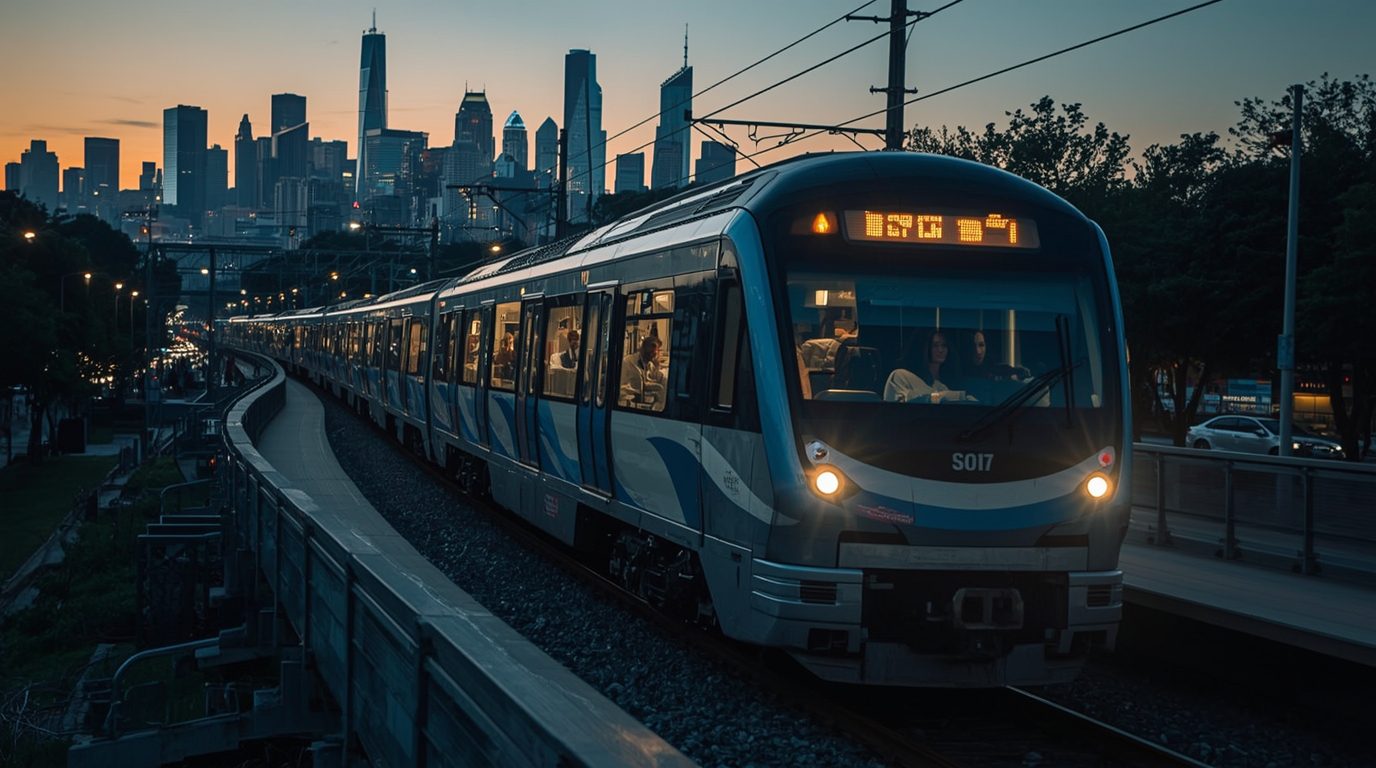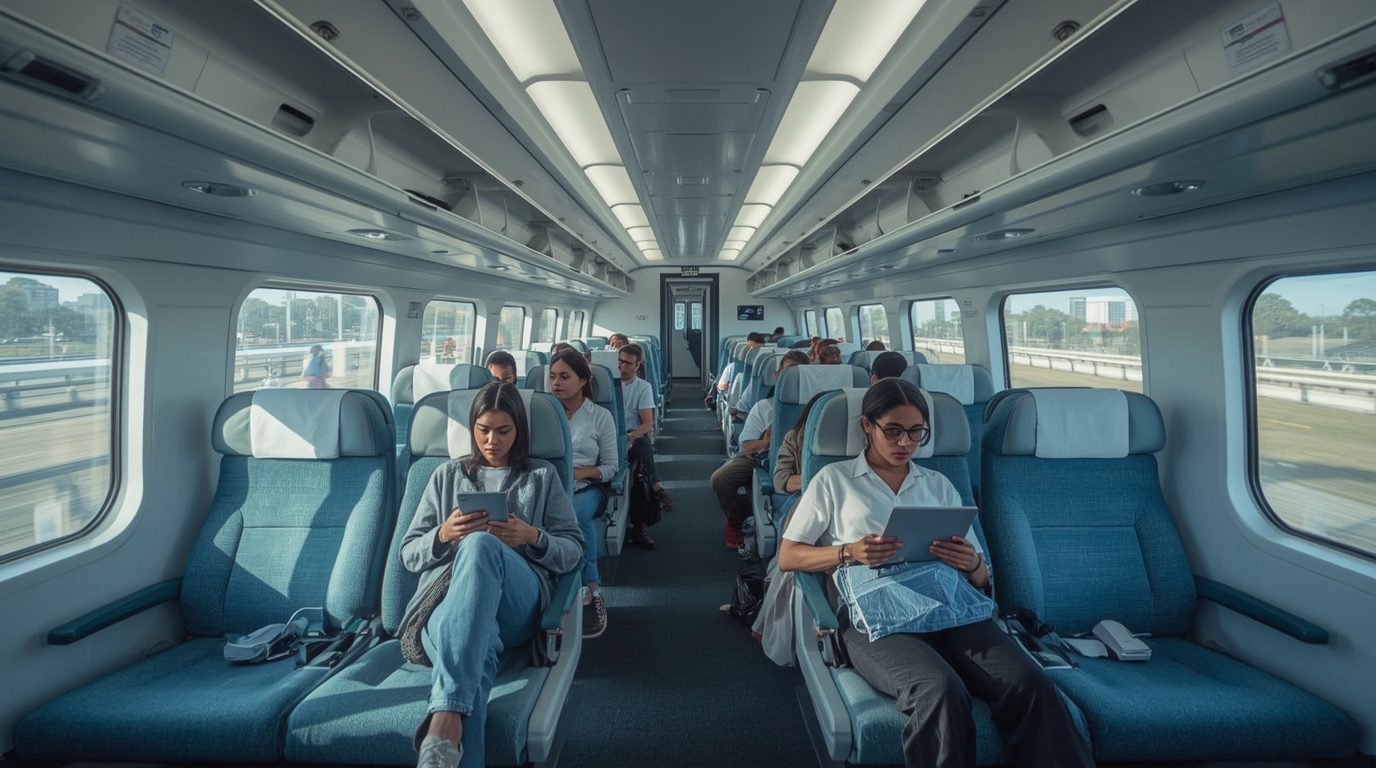Manchester Expands Bee Network With Plans For New Light Rail, Tram-Train Services, And Even Underground Transit: £6m Funding To Revamp Mobility Across The Region
Greater Manchester is undertaking one of the most comprehensive expansions for public transport in the region’s history, receiving funding of £6 million. This will allow the region to further develop the Bee Network, implementing new light rail routes and tram-train connections, along with forming some preliminary plans for underground transit. This will greatly change how residents, commuters, and visitors travel, and will provide a more sustainable alternative to cars in comparison to the ever-growing congestion, pollution, and urban sprawl.
Along with the overarching goal of improving public transport for the growing population of Greater Manchester, the region plans on expanding its bus and tram services to connect new neighborhoods, improving the journey times for residents. This includes extensions to Stockport, new links to Salford, enhanced connectivity to the airport, and even feasibility studies for potential underground lines.
Key Expansion Projects
Funding of £6 million has been allocated for several strategically important projects, encompassing both short-term optimizations and long-term infrastructure improvements:
1. Metrolink Extension to Stockport
Considered to be one of the most awaited projects, the Metrolink light rail network is set to be extended from East Didsbury to Stockport. The Strategic Outline Case (SOC) for this route is set to be completed by autumn this year, with construction set to start by 2030. The Stockport extension is likely to reduce journey times as well as help suburban commuters access the region more easily.
Along with the core extension, additional tram-train connections serving Hazel Grove, Tameside via Denton and Reddish, and Manchester Airport are also being considered by planners. These connections would utilize existing heavy rail infrastructure, integrating it with light rail services to ensure quick and easy travel to local, regional, and airport destinations.
2. Western Leg of the Airport Line
Works set to improve greater Manchester Airport connectivity are also underway. The SOC work for the Western Leg of the Airport Line, which will connect Manchester Airport to Wythenshawe Hospital and Davenport Green, is set to begin this year. The line is set to help reduce vehicular traffic on one of the busiest city region corridors. The strategy also includes tram-train connections to Stockport, Altrincham, and the Mid-Cheshire Line, which will extend the coverage of the Metrolink and provide greater convenience for passengers for travelling within the region as well as to and from the region.
3. Salford and Northwest Expansion
From the summer of 2026, Greater Manchester will start work on the SOC for the Salford Metrolink extensions to Salford Crescent, Salford Quays, and regions to the Northwest of the city. The extensions will primarily aim to improve access to Leigh, Wigan, and Bolton, which are poorly served by high-frequency public transport.
Improved Salford links will also benefit the region’s expanding business and cultural districts, particularly the revitalization of Salford Quays and MediaCityUK, enabling easy access for employees, visitors, and other personnel without the need for cars.
4. Further Developments for Middleton and Trafford
Transport planners are also looking at extending public transport to Middleton, the Northern Gateway, Trafford Waters, Port Salford, and the Western Gateway. These aim to coordinate transport infrastructure with urban redevelopment.
The emphasis in these areas shows the city’s enduring strategy of connecting residential areas to job centers, schools, and shopping areas using dependable public transit.
5. Protecting Long-Term Routes
Meanwhile, TfGM is also protecting long-term light rail corridors to Marple, Warrington, Glossop, and Hadfield. These safeguarded routes will ensure that no further urban development occurs that would hinder the possibility of future network expansion, allowing the city to enhance its transport infrastructure as needed.
6. Underground Transit System
Greater Manchester is also working on a proposed underground transit system. While it is still in the early phases, this system would add an east-west rapid transit corridor to the heavy rail, Metrolink, and bus networks serving the area. This system is intended to enhance travel speed, reduce congestion on surface routes, and offer a modern, high-capacity option for travel.
Work is also advancing on the initial phases of the tram-train route from Oldham to Heywood and Bury, which is expected to begin by 2028. These projects emphasize the city’s commitment to seamlessly integrating light rail, tram-train, and future underground networks into a unified transport system.
Fleet Update for Increased Demand
Expansion plans are in tandem with the renovation of Greater Manchester’s light rail fleet. Transport for Greater Manchester (TfGM) plans to buy new Light Rail Vehicles (LRVs) which will be one-and-a-half times the length of current trams and will have full-width gangways. This design enhancement will improve the flow of passengers throughout the vehicles, improving capacity and alleviating congestion during peak travel times.
Fleet upgrades will also help the Bee Network to actively respond to growing demand as a result of population changes, urban regeneration, and a shift towards more sustainable transport options. The new LRVs will have full accessibility features, energy-efficient systems, and enhanced safety features, making sure that the growing network is able to respond to the needs of future generations.
Greater Manchester: Building a Vision for the Future
Greater Manchester’s mayor, Andy Burnham, remarked on the investment saying, “This latest funding ensures we can develop a pipeline of new tram lines, tram-train extensions, and, ultimately, underground infrastructure to build a public transport system worthy of a global city region.” The public transport investment also enables Burnham’s vision of a world-class public transport system.
He also said, “With the growing adoption of the Bee Network, we must proactively develop solutions to supplement car travel. We will fulfill the city’s future transport requirements with the addition of tram, bus, and train routes.”
This strategy supports Greater Manchester’s more overarching Transport Strategy, which aims to reduce car use, lower greenhouse gas emissions, and promote sustainable growth within the city. Along with its public transport expansion, the Bee Network aims to transform commuting patterns, reduce traffic congestion, and improve air quality throughout the city region.
Impact on Communities and Economy
The expansion of the Bee Network is expected to have a transformational impact not just on the local communities, but the economy as well. Some of the key benefits are:
- Improved Access: Suburban residents will benefit from better access to education, healthcare services, and leisure facilities. Tram-train connections will seamlessly integrate suburban towns with central Manchester, fostering economic unification.
- Sustainable Growth: The expansion is predicted to shift travel patterns from private car usage to public transport, which will help the city meet its climate goals.
- Economic Regeneration: Improving residential and commercial investment in Salford Quays, Trafford Waters, and Stockport is possible with increased connectivity. These regions stand to benefit from increased business, investment, and residential activity due to improved transport links.
- Enhanced User Experience: Safety and efficiency will improve for travelers with the introduction of longer trams with full-width gangways and modern stations with integrated services.
Protecting Greater Manchester’s long-term corridors and planning for underground transit infrastructure revisions allows the region to mitigate population growth and changing mobility challenges for several decades, ensuring the transport network is adaptable.
Integration with Wider Transport Networks
The expansion of the Bee Network is not happening in a vacuum. It will combine with the existing bus services, the national rail lines, and the proposed high-speed rail lines to form a fully integrated metropolitan city region.
Enhanced airport access granted by the expansion of the Manchester Airport lines will serve the needs of residents and international travelers alike while reducing the dependence on taxis and other private vehicles.
Stockport, Wigan, Bolton, and Mid-Cheshire Line residents will be able to access tram-train connections which vastly improve regional commuting without the use of personal vehicles.
Urban Mobility: As we develop underground transit systems and expand Metrolink routes, travel in heavily populated urban areas will become easier in all directions, east-west and north-south. These developments will work alongside existing cycling and pedestrian infrastructure improvements.
Challenges and Future Considerations
Although the potential expansion is promising, there are a number of challenges that need to be addressed:
- Funding and Delivery: Planning and strategic cases have a preliminary cost of £6 million, and construction is projected to be in the billions. Long-term funding will need to be secured while carefully managing project delivery.
- Engineering Complexities: Creating tram-train systems will lightly integrate trains and trams with existing train tracks in order to extend light rail to densely populated areas, needing to create underground tunnels. These all present various engineering and logistical challenges.
- Environmental Effect: There are numerous construction and expansion policies that need to be followed concerning the environment, such as the shaping of carbon emissions during construction, the protection of green spaces, and the overall risk of floods.
- Public Engagement: As construction proceeds, the community needs to be engaged in order to make sure that their needs are being addressed, including the services being offered and potential disruptions.
Conclusion
Greater Manchester investing £6 million into the Bee Network is an important milestone towards building a holistic, sustainable, and future-prepared public transport system. From the Metrolink extensions to Stockport and Salford, along with the Western Leg of the Airport Line, tram-train developments, and initial plans for underground transit, the city region is investing in improved mobility for the coming decades.
Faster, more reliable, and more sustainable transport options will be provided to the residents. This will improve air quality, reduce car dependency, support economic growth, and add to the overall mobility of the region. Simultaneously, the integration of modern fleets along with safeguarding for long-term corridors and prioritization of cross-network connectivity will add to Greater Manchester’s reputation as a global leader for urban mobility planning.
Greater Manchester is getting the reputation of an innovative city and the construction along new routes expected to be added will be further reinforced as the Bee Network enhances public transport. This will make commutes easier for thousands of residents, visitors, and employees.
Stay updated with reliable news:
Sports: Sport Flash HQ
Business: Biz Rush
Weather: The Climate Post
Travel: Neon Report
US Local: 24 Hour Bulletin
India Finance: The Lucky Ledger
General: The Chrono Post



